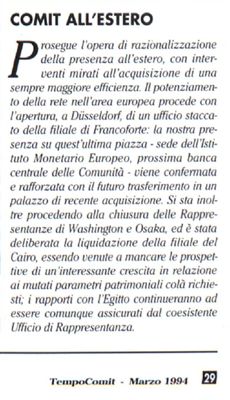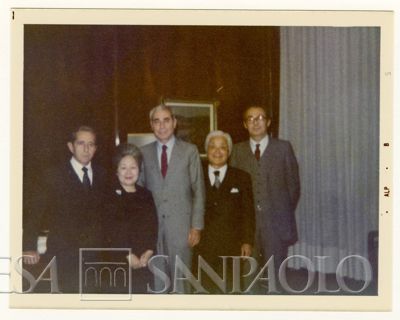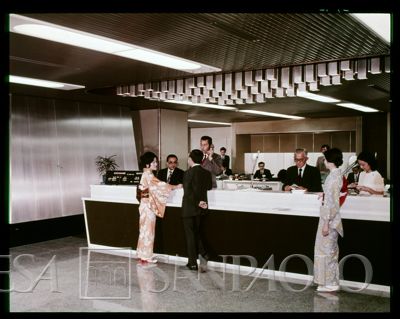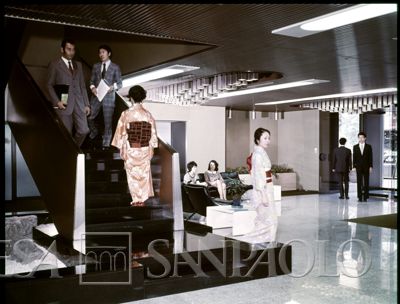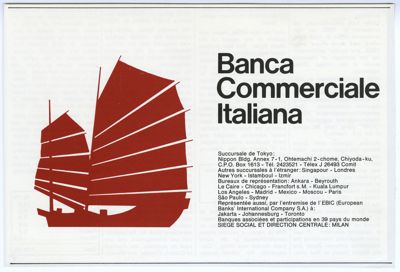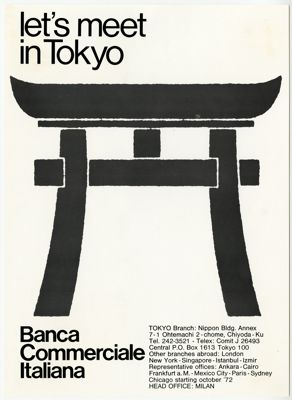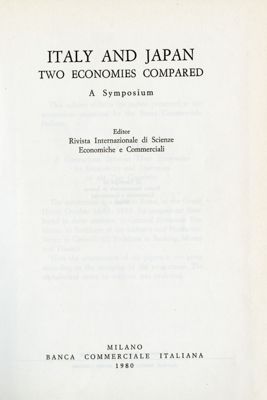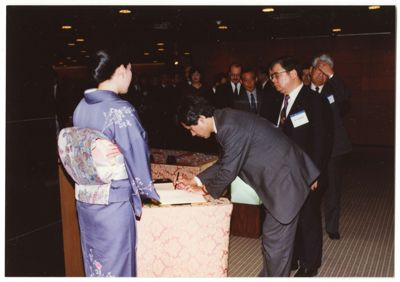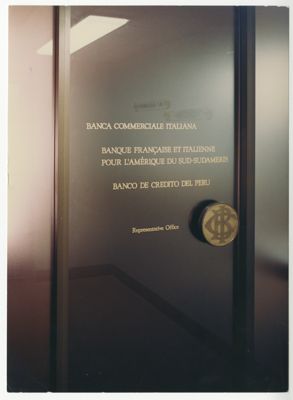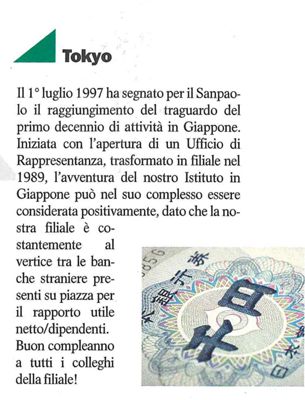| description |
TIMELINE
1970: Banca Commerciale Italiana (BCI) representative office opened in Tokyo.
1972: BCI's representative office in Tokyo transformed into a branch.
1972: Banco Ambrosiano (BA) representative office opened in Tokyo through the Inter-Alpha Group.
1984: BCI representative office opened in Osaka.
1987: Istituto Bancario San Paolo (IBSP) representative office opened in Tokyo.
1989: IBSP branch opened in Tokyo.
1991: Cassa di Risparmio delle Provincie Lombarde (CARIPLO) representative office opened in Tokyo.
During the 1950s and '60s, at a time when the Japanese economy was growing rapidly, the country's financial institutions were still somewhat isolated. Only towards the end of the 1960s, as this policy of isolation began to meet increasing international pressure, were foreign banks given authorization to establish a direct presence in the country.
Banca Commerciale Italiana (BCI) was the fourth such institution (and the first Italian one) to establish a representative office in Tokyo. Inaugurated in 1970, it was transformed into a branch in 1972.The decision to enter the Japanese banking market was based on BCI's desire to embark on further trade activities with the country, and more broadly speaking to advance business and financial opportunities between Italy and Japan. The two countries shared many characteristics: both had few raw materials, high population densities and national industries focused mainly on processing and manufacturing; both were highly active in commerce and trade. In the 1960s and '70s the two countries began to intensify their relations, increasingly expanding commercial activities with one another.
For over a decade - until Credito Italiano opened its own branch there in 1982 - BCI was the only Italian bank with a fully operational branch in Japan. However, Banco Ambrosiano opened a Tokyo-based representative office through the Inter-Alpha Group in the same period.
In the 1980s Banca Commerciale Italiana (BCI) strengthened its presence in Japan by opening a representative office in Osaka, the country's second most important economic center. In 1989 Istituto Bancario San Paolo (IBSP) transformed its own representative office in Tokyo, which it had set up two years earlier, into a branch. In pinpointing this new Asian hub, the objective of the Turin-based bank - which had been operating through an Anciennes Institutions de Crédit Italiennes (AICI) office since 1975 - was both to support international companies and institutions working with non-European countries and to seek out new business opportunities for Italy.
In the 1990s CARIPLO entered the Japanese banking market as well, setting up a representative office in the country's capital in 1992, at a time when most international financial institutions had a clear preference for doing business in China. The Tokyo market was in fact still heavily regulated, characterized by strong ties between the industrial sector and local banking institutions which made it difficult for foreign banks to expand their operations in the country.
A few years later, however, thanks to the deregulation of the social security sector, a collapse in domestic returns, the entry into the Japanese market of foreign players with aggressive investment policies and the need of Japanese investors to achieve better yields, the time became ripe for establishing an asset management office. This led Sanpaolo IMI to set up a trade and investment representative office inside its Tokyo branch. |

